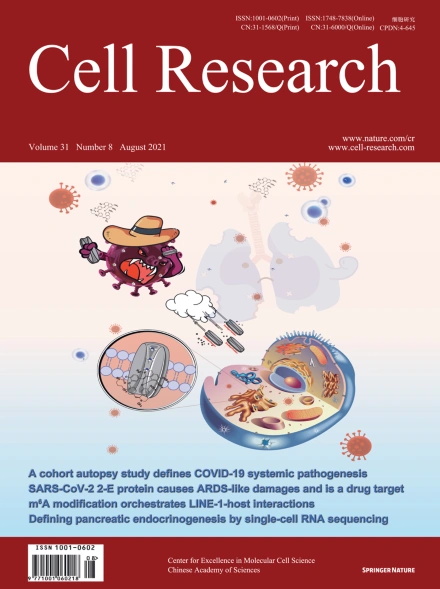
Advanced Search
Submit Manuscript
Advanced Search
Submit Manuscript
Volume 31, No 8, Aug 2021
ISSN: 1001-0602
EISSN: 1748-7838 2018
impact factor 17.848*
(Clarivate Analytics, 2019)
Volume 31 Issue 8, August 2021: 935-938 |
Sulfated glycosaminoglycans and low-density lipoprotein receptor mediate the cellular entry of Clostridium novyi alpha-toxin
Yao Zhou1,2,3 , Diyin Li1,2,3 , Jianhua Luo1,2,3 , Aizhong Chen1,2,3 , Xingxing Li1,2,3 , Zhenrui Pan1,2,3 , Li Wan1,2,3 , Liuqing He1,2,3 , Danyang Li1,2,3 , Yanyan Li1,2,3 , Min Dong4,5 , Liang Tao1,2,3,*
1Key Laboratory of Structural Biology of Zhejiang Province, School of Life Sciences, Westlake University, Hangzhou, Zhejiang, ChinaDear Editor,
Clostridium novyi (C. novyi) is a spore-forming anaerobic bacterium and opportunistic pathogen causing severe infectious diseases in humans and animals including gas gangrene, myositis, necrotic hepatitis, and sepsis.1,2 The alpha-toxin (Tcnα) is the major virulence factor of C. novyi and is produced by all known pathogenic C. novyi types.1 Tcnα belongs to the large clostridial toxin (LCT) family which also includes Clostridioides difficile toxin A (TcdA) and toxin B (TcdB), Paeniclostridium sordellii lethal toxin (TcsL) and hemorrhagic toxin (TcsH), and Clostridium perfringens large cytotoxin (TpeL). Like other LCTs, Tcnα binds to the surface of the target cell and enters the cell via receptor-mediated endocytosis. The enzymatic domain is then delivered into the cytosol and glucosylates small Rho-family GTPases using UDP-N-acetylglucosamine as a co-substrate, leading to cytoskeleton disruption and cell death.3 Recently, the cellular receptors of several LCTs, including TpeL, TcdB, TcdA, and TcsL have been identified.4,5,6,7,8,9,10 Tcnα and TcsH are the only two major members of the LCT family with their host receptors remaining unclear.
https://doi.org/10.1038/s41422-021-00510-z